An Urban Greenhouse Overflows With Edibles
http://decor-ideas.org 04/22/2014 22:23 Decor Ideas
In their greenhouse in San Francisco, Tom Cowan and Lynda Smith currently grow lettuce, radicchio, Swiss chard, dandelions (Italian heirloom), onions, strawberries, raspberries, garlic, mint, kale, mustard, curly kale, watercress, basil, parsley, sage, thyme, chives, sorrel, about eight trays of various seedlings and a few other miscellaneous things. “Needless to say, we get all our greens, salads, kitchen herbs etc. from [there],” says Cowan.
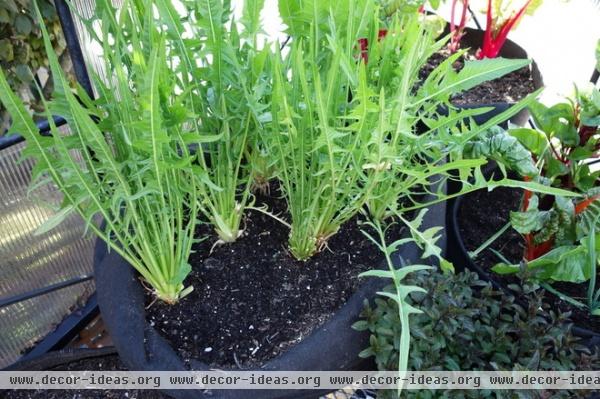
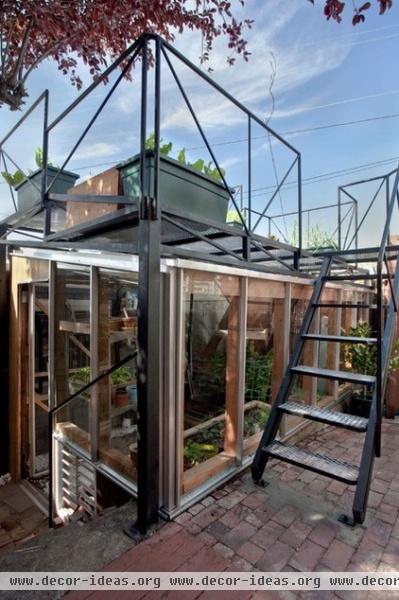
San Francisco’s Bernal Heights neighborhood boasts some of the warmest temperatures and best views in the city. Cowan and Smith weren’t growing edibles when they bought their home (a converted chicken coop) two years ago, but the potential excited them. A backyard orchid house only sweetened the deal.
They hired architect Ron Stanford to revive the crumbling orchid house. After tearing it down to its foundation, he framed the new 125-square-foot greenhouse with recycled old-growth fir and added stock aluminum windows and a custom steel truss. Cowan, a holistic and food-based doctor, requested a walkable roof, now accessible by metal ship’s stairs. “The clients gave us some real trust. It’s a beautiful site, and they gave us pretty much free rein,” Stanford says.
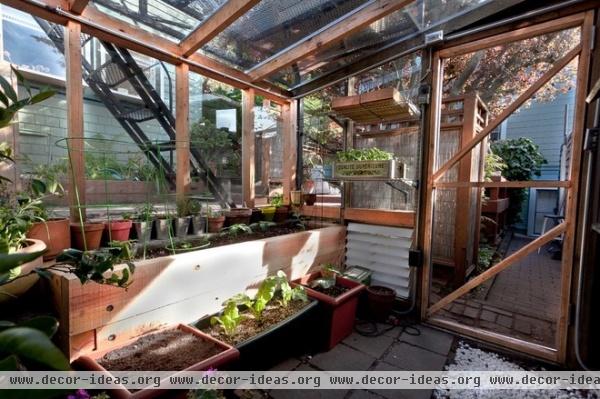
“A greenhouse-conservatory is a kind of sacred space. A lot of things intersect there,” Stanford says. “In addition to functionality, I really wanted the interior to be a spot you could just slow down and breathe.” The cedar planter he built connects directly to the soil beneath. “You get a little of that scent when you water,” he says. Cowan had intended to grow more inside the greenhouse, shown here right after construction, but found the sunlight on top of the greenhouse to be much better.
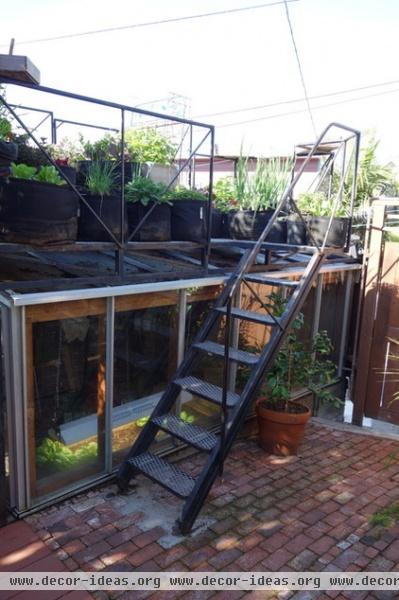
Now in its second year of production, the greenhouse farm is thriving.
Cowan, the garden’s primary caretaker, got the gardening bug while teaching in the Peace Corps over 30 years ago. He grows most of his crops on the roof, while reserving the interior of the greenhouse for seed starting, worm bins, compost teas, herb drying and growing a few lettuce heads.
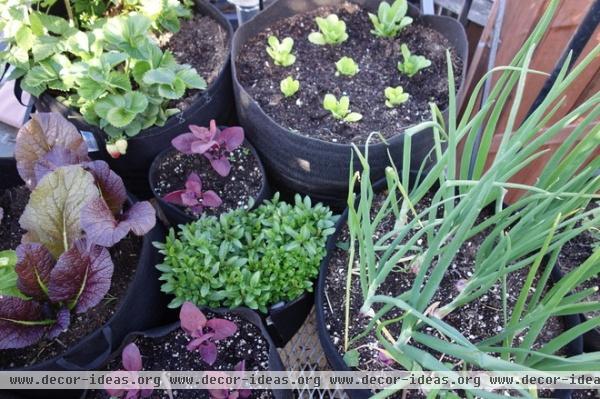
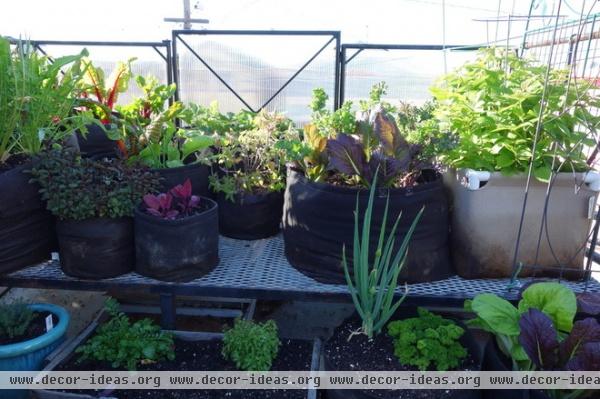
He grows most of the edibles in soft GeoPots or Smart Pots. Besides being portable and inexpensive, they have a porous fabric that helps to create healthy and resilient root systems and plants.
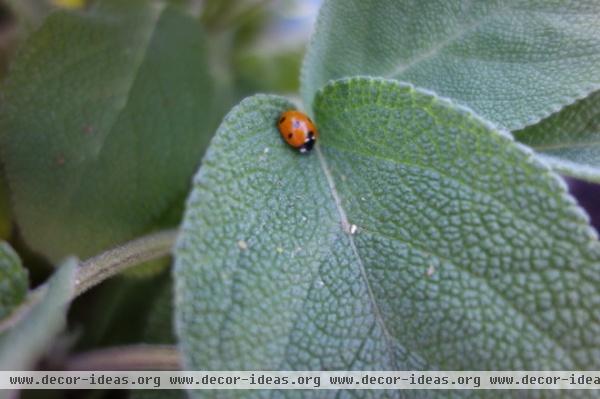
A ladybug crawls across a sage leaf.
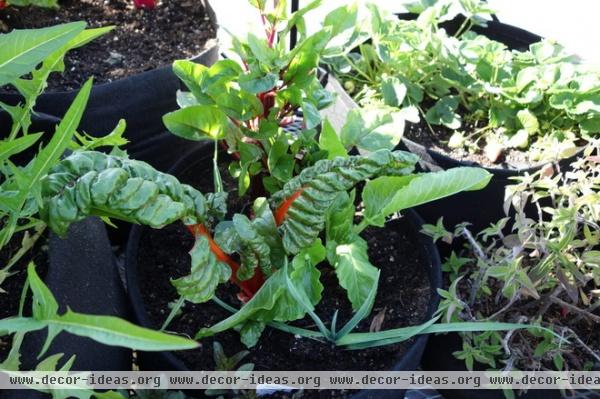
A volunteer chard started growing on its own.
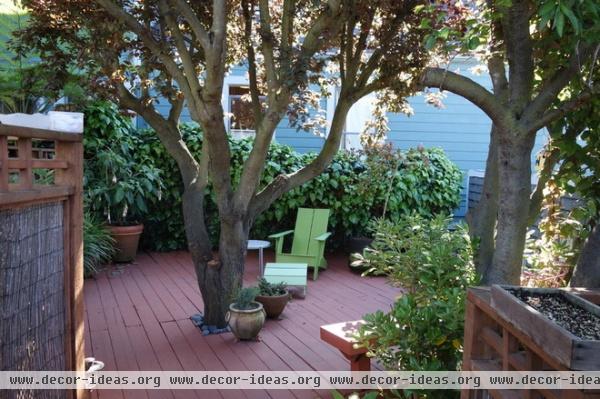
The terraced backyard also came with two mature plum trees; Cowan grafted nectarine and almond branches to one of them. If all goes well next year, the tree will produce nectarines and almonds as well as plums.
A potted surinam cherry tree and an edible fuchsia tree (Fuchsia boliviana) are nestled in the back of the deck.
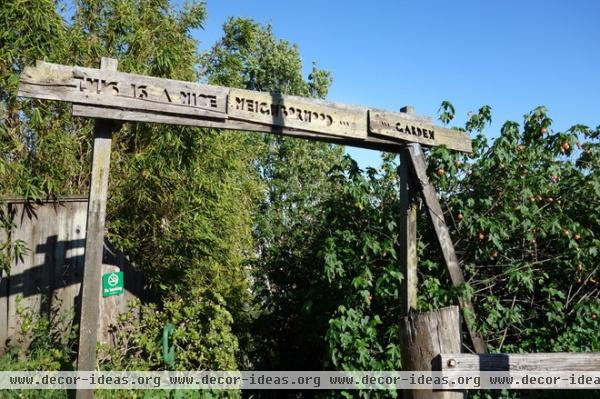
A five-minute walk from the greenhouse brings us to a community garden that Smith is the coordinator of; Cowan grows edible perennials there.
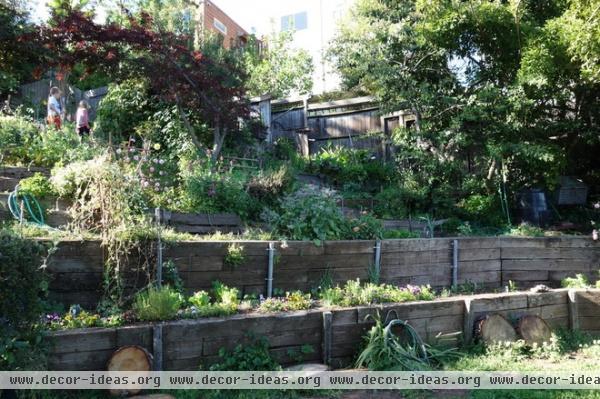
Cowan manages about 50 edible plants, as well as various fruit trees and berries, in the community garden. Everything from apple trees to raspberries, native salmonberries (resembling raspberries), blueberries and huckleberries gets a shot in the sun.
This south-facing garden is also warm and protected enough to grow things like tomatoes and even a cherimoya, a Central American native, which Cowan suspects may be one of the only ones growing in the city. Mark Twain, a onetime San Francisco resident, called the cherimoya “the most delicious fruit known to men.”
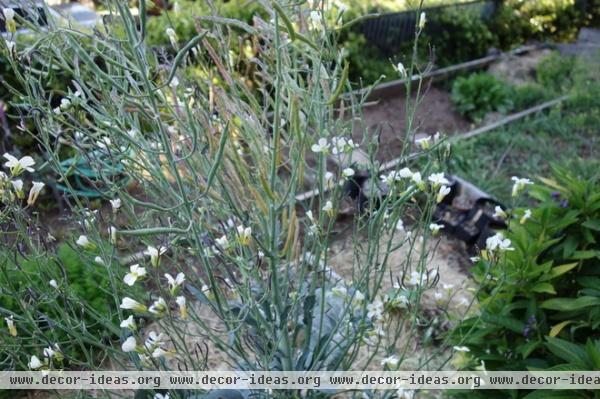
A tree collard had gone to seed when we visited. Cowan is waiting to see what happens, since this is unusual behavior.
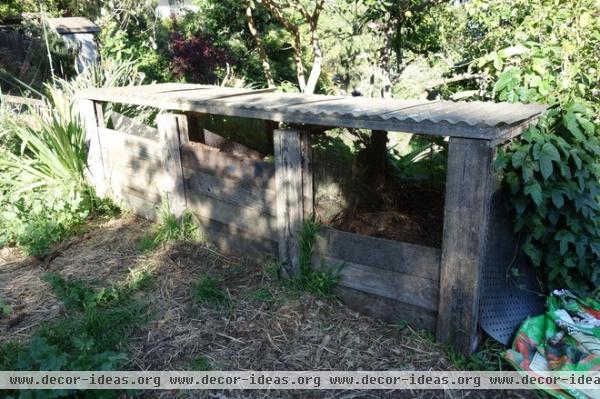
In addition to organic matter and food scraps, Cowan composts with horse manure.
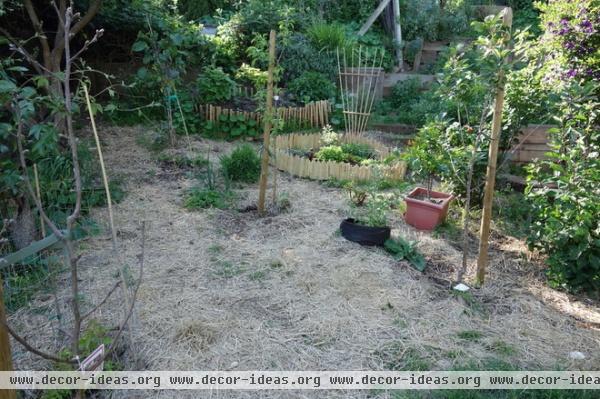
Cowan and his son cleared an overgrown spot in the garden and planted fruit trees for what he calls a “food forest,” consisting of a few apple trees, the cherimoya and a tree tomato. Though they’re not producing yet, Cowan expects fruit within the next year. Once the perennials get going, they’ll produce for a long time and won’t require as much day-to-day care.
For the fenced-in beds in the back, Cowan experimented with hugelkulter — a German concept for building raised beds involving digging a pit, burying sticks and branches, and then covering them back up with soil. “I’m doing it for fun to see how it works,” says Cowan. Smaller plants that need more sun go in the front, while taller plants will tower over them in the back.
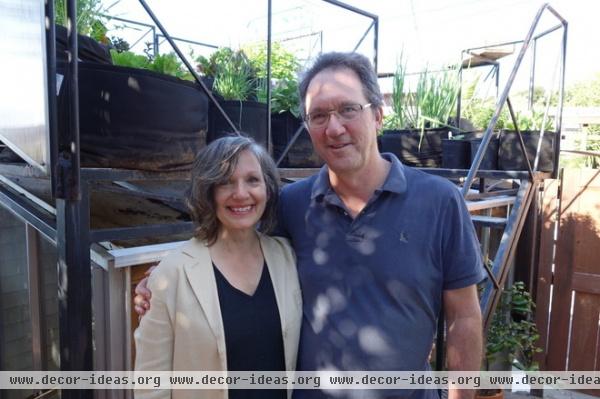
Between the two garden sites, Cowan, shown here with Smith, estimates he grows about 150 plants. There’s no secret trick to it all. He mixes his own soil, uses a lot of compost and waters everything by hand, spending every spare moment he can in the garden. “You need to have a relationship with the plants,” Cowan says. He believes you need to see what they need and fix it with your hands and really know them. It’s a philosophy that goes beyond watering.
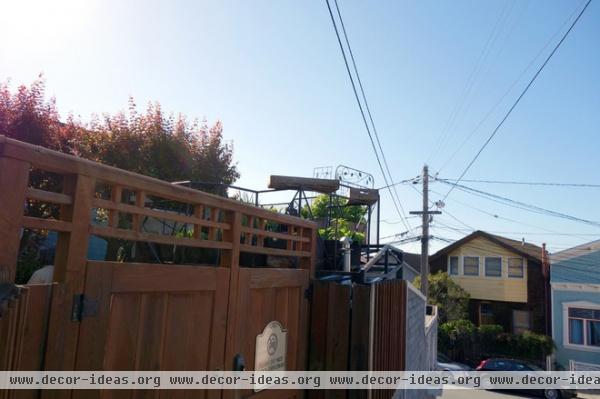
More: Learn how to farm your yard in the Houzz Garden section
Related Articles Recommended












